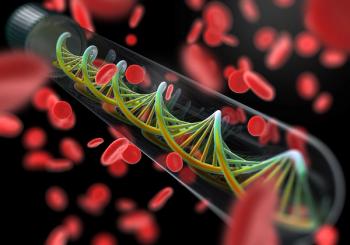
Exhaled Compounds Could Provide Accurate Lung Cancer Diagnosis
A breath test that looks for carbonyl volatile organic compounds could help distinguish between benign and malignant nodules, and be used as an adjunct to CT scans in lung cancer diagnosis.
Exhaled breath contains carbonyl volatile organic compounds (VOCs) that can be used as an adjunct to computed tomography (CT) scans in the diagnosis of lung cancer, according to a new study. The breath test could help distinguish between benign and malignant nodules.
“The analysis of exhaled breath is a promising noninvasive tool for diagnosis of early lung cancer,” wrote study authors led by Michael Bousamra, MD, of the University of Louisville, in an abstract presented in January at the annual meeting of the Society of Thoracic Surgeons. “Previous techniques have not achieved clinical significance due to a lack of specificity and difficulties related to complex volatile mixtures.”
For this study, a silicone microprocessor was coated with an amino-oxy compound that binds to the carbonyl compounds-specifically aldehydes and ketones-in exhaled breath. First, breath samples from 88 smoker and non-smoker controls, along with 10 initial patients with lung cancer, were collected and compared; from this, four carbonyl compounds were identified as markers of lung cancer.
Next, the investigators collected preoperative samples from 48 patients with early-stage lung cancer (32 stage I patients and 16 stage II patients), and 32 others with benign pulmonary nodules.
With elevated levels of at least three of the four compounds, the test was predictive of lung cancer in 97% of patients. Further, the absence of VOC elevation predicted the nodules were benign in 90% of patients. Among the 15 patients who underwent resection, and then conducted a second breath test, all 15 saw VOC levels drop to those of healthy controls.
“Instead of sending patients for invasive biopsy procedures when a suspicious lung mass is identified, our study suggests that exhaled breath could identify which patients may be directed for an immediate intraoperative biopsy and resection,” Bousamra said in a
Other attempts at using exhaled breath have seen some success, including one
Newsletter
Stay up to date on recent advances in the multidisciplinary approach to cancer.
















































































